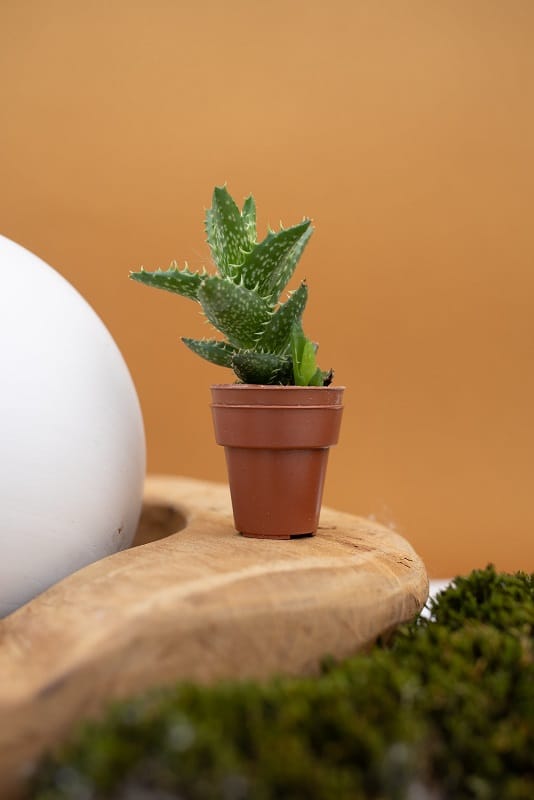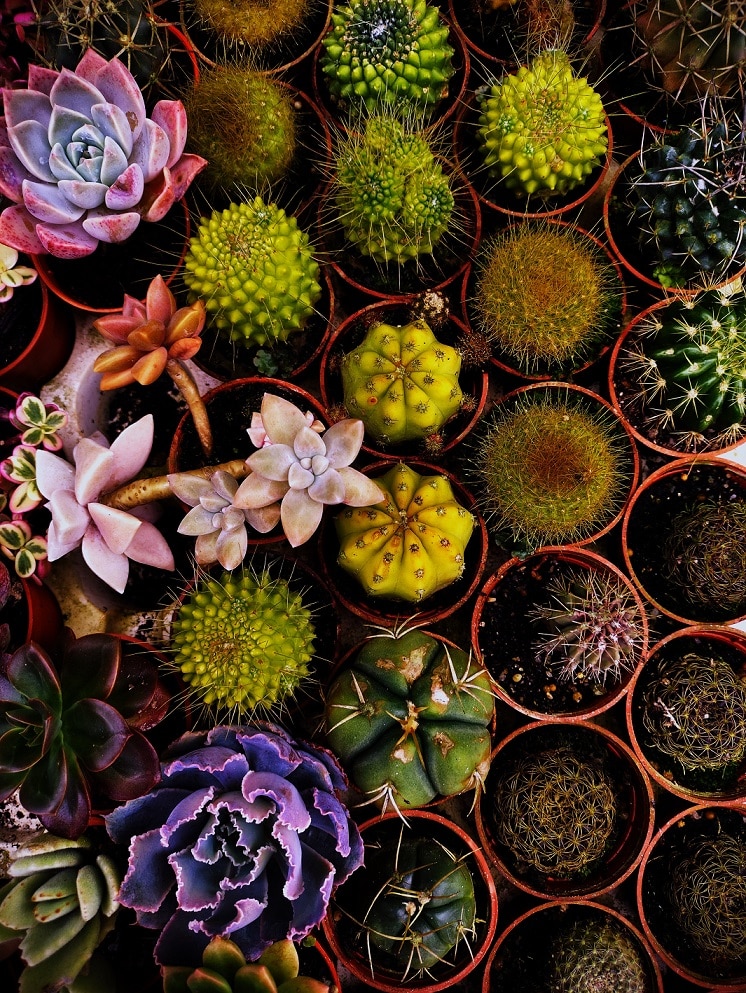Discover the fascinating reasons behind why cactus turn purple. Explore the unique factors that contribute to this color change, from natural pigmentation to environmental influences.
Imagine walking through a desert landscape filled with vibrant hues of green and brown cactus. When suddenly you stumble upon a captivating sight – a cluster of cacti with striking purple tones. Have you ever wondered why these succulent plants, known for their prickly exteriors and ability to withstand harsh conditions. Take on such a mesmerizing shade? In this article, we will uncover the fascinating reasons behind the mysterious transformation of why cactus turning purple. Shedding light on the hidden secrets of these remarkable desert dweller
Causes: Why Cactus Turn Purple?
Cacti are fascinating plants known for their ability to survive in harsh, arid environments. One of the intriguing aspects of these plants is their ability to change color, with purple. The phenomenon of cacti turning purple attributes to various factors. It includes anthocyanins as pigments, exposure to high light, heat, environmental stress, seasonal changes, insect infestation, disease and infection. Let’s explore each of these causes why cactus turn purple in more detail.

Anthocyanins as pigments
Anthocyanins are natural pigments responsible for the vibrant red, purple, and blue colors observed in many plant species, including cacti. These pigments are because of the plant cells and serve various purposes, such as attracting pollinators or protecting against harmful ultraviolet (UV) radiation. In cacti, the presence of anthocyanins contributes to their beautiful purple coloration.
Anthocyanin production and accumulation
The production and accumulation of anthocyanins in cacti is due to environmental factors, such as light intensity and availability. When cacti gets in high light conditions, especially during intense sunlight or heat, they may produce and accumulate higher levels of anthocyanins. This can result in their striking purple coloration. The exact mechanisms behind anthocyanin production and accumulation in cacti believes to be by genetic factors and environmental stimuli.
Exposure to high light and heat
Cacti thrive in arid environments with intense sunlight and high temperatures. However, prolonged exposure to excessive light and heat can have detrimental effects on these plants. When cacti is in intense sunlight, they may experience sunburn, which can manifest as purple discoloration. Similarly, heat stress can also cause changes in cacti’s pigmentation, leading to purple coloration.
Effects of intense sunlight
Intense sunlight can damage the photosynthetic apparatus in cacti, leading to the formation of reactive oxygen species (ROS) and oxidative stress. In response to this stress, cacti produce anthocyanins as a protective mechanism. The accumulation of anthocyanins helps to shield the plant’s cells from UV radiation and reduce the damage caused by the excessive light.
Sunburn
When cacti are remain for prolonged periods in the intense sunlight, they can develop sunburn, which presents as a purple or reddish discoloration on the plant’s surface. It can be a main cause why cactus turn purple? This discoloration occurs due to the accumulation of anthocyanins, which can act as a natural sunscreen to protect the cactus from further damage. While sunburn may not be fatal for cacti, it is a sign that the plant is experiencing stress and requires attention.
Heat stress
High temperatures can also trigger changes in the pigmentation of cacti, leading to a purple hue. Heat stress can disrupt various physiological processes within the plant, including the synthesis of pigments. The production of additional anthocyanins can help the cactus cope with the stress and protect its cells from the damaging effects of excessive heat.
Environmental stress and defense mechanism
Cacti endure harsh environmental conditions, including drought and cold. However, when these plants are in extreme stress, their physiology and appearance can be affected, sometimes resulting in a purple coloration.
Drought stress
Drought stress occurs when cacti experience prolonged periods with insufficient water availability. As a survival strategy, cacti respond to this stress by decreasing their metabolic activities and conserving water. The reduction in water availability can lead to changes in the plant’s pigmentation, with purple coloration being a common response. This change in color can be attributed to the accumulation of anthocyanins, which may help protect the cacti’s tissues from desiccation and UV radiation.

Cold stress
Cold stress can also induce color changes in cacti, often resulting in a purple or reddish hue. When exposed to low temperatures, cacti may activate defense mechanisms to protect themselves from freezing injury. The accumulation of anthocyanins in response to cold stress helps to stabilize cell membranes and prevent damage caused by ice crystal formation. This protective pigmentation can lead to the purple coloration observed in cold-stressed cacti.
Defense response and protective pigmentation
In addition to responding to specific stressors such as drought or cold, cacti can exhibit a defense response against various threats. This response includes the production of secondary metabolites, such as anthocyanins, which can serve as a form of protective pigmentation. When cacti perceive a threat, such as insect infestation or fungal infection, they may produce higher levels of anthocyanins, resulting in a purple coloration. This color change is believed to be part of the plant’s defense mechanism to deter herbivores or inhibit the growth of pathogens.
Nutrient deficiencies
The availability of essential nutrients is crucial for the overall health and development of cacti. When these plants lack certain nutrients, they may exhibit a range of symptoms, including changes in pigmentation. Nutrient deficiencies can contribute to cacti turning purple.
Role of nutrients in plant health
Nutrients play vital roles in various physiological processes within plants. They are involved in the synthesis of pigments, enzymes, and other compounds essential for growth and development. When cacti lack specific nutrients, their ability to produce and accumulate pigments, such as chlorophyll or anthocyanins, can be affected.
Key nutrients for cacti
While cacti have adapted to survive in nutrient-poor environments, they still require certain key nutrients for optimal growth and coloration. it can be an optimal reason why cactus turn purple. Some of the essential nutrients for cacti include nitrogen, phosphorus, potassium, iron, and magnesium. Deficiencies in these nutrients can lead to various symptoms, including purple discoloration.
Symptoms and effects of nutrient deficiencies
When cacti experience nutrient deficiencies, they may exhibit a range of visible symptoms, including purple or reddish coloration. For example, nitrogen deficiency can lead to a decrease in chlorophyll production, causing a purple or reddish hue. Similarly, deficiencies in other nutrients, such as iron or magnesium, can also result in changes in pigmentation, leading to a purple coloration.
Genetic factors
Genetic factors play a significant role in determining the coloration of cacti. Certain cactus species or cultivars may have inherent genetic traits that contribute to their purple pigmentation.
Inheritance of purple traits
The genetic traits responsible for purple coloration in cacti can be inherited from parent plants. By selectively breeding cacti with desirable purple traits, growers can propagate new generations of cacti with a higher likelihood of displaying purple coloration.

Genes responsible for purple coloration
While the specific genes responsible for purple coloration in cacti are still being studied, it is understood that gene expression and regulation play a crucial role. Genetic factors can influence the production and accumulation of anthocyanins, as well as other pigments involved in the purple coloration of cacti.
Seasonal changes
Cacti can exhibit natural color variations throughout the year, with their pigmentation changing in response to seasonal fluctuations. It can be the main cause why cactus turn purple?
Natural color variation throughout the year
Seasonal changes in temperature and light intensity can influence the color expression of cacti. During periods of favorable growing conditions, cacti may display a greener appearance. However, as conditions change, especially during colder or drier seasons, cacti may exhibit shifts in color, including purple hues.
Effect of temperature and light on color expression
Temperature and light play important roles in the developmental and physiological processes of plants. As temperatures decrease and light levels decrease during certain times of the year, cacti may undergo physiological changes that result in purple coloration. These changes are often a response to the changing environmental conditions and can vary among different cacti species.

Insect infestation
Insects can significantly impact the coloration of cacti, as they interact with the plant’s tissues and trigger defense responses. Yes, might be this could be the reason why cactus turn purple?
Influences of pests on cacti color
When cacti are infested with pests, such as insects or mites, they may undergo color changes as part of their defense mechanism. The presence of pests can trigger the production of secondary metabolites, including anthocyanins, to deter or repel these herbivores. This defense response can result in the cactus displaying a purple hue.
Mechanisms of color change as a response to insects
When pests attack cacti, they may cause physical damages or inject toxic substances into the plant’s tissues. In response to these attacks, cacti may produce higher levels of anthocyanins, which can act as a signal for other beneficial insects or as a tactic to repel and discourage further herbivory. This defensive coloration can manifest as purple coloration in infested cacti.
Disease and infection
Diseases and fungal infections can also lead to changes in cactus coloration, potentially causing them to turn purple.
Impact of diseases on cacti coloration
When cacti are affected by diseases or fungal infections, their pigmentation can be altered. Fungal pathogens may disrupt the normal functioning of plant cells, resulting in color changes, including purple discoloration. The exact mechanisms behind these color changes in response to diseases are still being studied.
Fungal infections and color changes
Some fungal infections can induce color changes in cacti, leading to purple or dark discoloration. These fungal pathogens may release toxins or enzymes that alter the pigmentation of plant tissues. The production and accumulation of anthocyanins can be part of the plant’s response to these fungal attacks, contributing to the purple coloration observed.

Cultural practices
In addition to natural factors, cultural practices employed by growers and enthusiasts can influence the color of cacti.
Artificial coloration techniques
Some growers may employ artificial coloration techniques to enhance or modify the color of cacti. These techniques can involve the application of dyes or pigments onto the plant’s surface. While these artificial coloration methods can result in cacti turning purple, it is important to note that they are not reflective of natural color changes caused by environmental factors.
Enhancing or maintaining purple color in cacti
For those interested in promoting or maintaining purple coloration in their cacti, providing optimal growing conditions and ensuring proper nutrient management can be beneficial. By understanding the factors that contribute to purple coloration and addressing any underlying issues, such as nutrient deficiencies or environmental stress, cacti can continue to display their striking purple hues.
Conclusion
Thus, the phenomenon of cacti turning purple can be attributed to a combination of factors, including anthocyanins as pigments, exposure to high light and heat, environmental stress, nutrient deficiencies, genetic factors, seasonal changes, insect infestation, disease and infection, as well as cultural practices. Each of these causes can influence the pigmentation of cacti and contribute to the stunning purple coloration observed in these unique plants.




